Shopify Pricing Plans: What’s The Cost Of Shopify Dropshipping?
Starting an e-commerce business can be a daunting task, and one of the most important decisions you’ll make is choosing the right platform to build your store on.
Shopify is one of the most popular e-commerce platforms available, and for good reason. It offers a wide range of pricing plans to suit the needs of businesses of all sizes and sales volumes.
In this article, we’ll take a closer look at Shopify’s pricing plans, including its features, as well as the transaction fees and add-ons available.
We’ll also discuss how to choose the right Shopify plan for your business, and how to take advantage of the platform’s free trial and money-back guarantee.
Let’s get you to make informed decisions!


Table of Contents
- What Are The Different Shopify Pricing Plans and What Features Do They Include?
- Basic Shopify
- All basic e-commerce features, including an online store and shopping cart
- Ability to sell on social media and marketplaces
- 1 staff account
- 1 public storefront
- up to 10 Inventory locations
- Shopify Regular
- All features of Basic Shopify
- Gift cards and professional reports
- 5 staff accounts
- Lower credit card rates
- 1 public storefront
- up to 10 Inventory locations
- Advanced Shopify
- All the features of the Basic and Regular plans
- Advanced report builder
- 15 staff accounts
- Lower credit card rates
- Real-time carrier shipping
- third-party calculated shipping rates at checkout
- 1 public storefront
- up to 1000 Inventory locations
- Shopify Plus
- Dedicated account management
- Customizable checkout
- Advanced reporting and analytics
- Customizable site design
- Multi-language and multi-currency support
- Flexible APIs for customization
- Advanced fraud analysis
- Unlimited staff accounts
- Customizable email templates
- 200 Inventory locations
- Shopify Starter
- How To Choose The Right Shopify Pricing Plan For Your Dropshipping Business
- How To Reduce Transaction Fees On Shopify
- The No. 1 Tool for all dropshippers – now with AI
- Shopify’s free trial and money-back guarantee
- Shopify’s pricing compared to other e-commerce platforms
- How Shopify Pricing Plans Vary For Small and Large Businesses
- Frequently Asked Questions about Shopify Pricing Plans
- How much does Shopify cost and what are the transaction fees?
- Is there a free trial or money-back guarantee for Shopify?
- How do I choose the right Shopify pricing plan for my business?
- How many staff accounts are included in each Shopify pricing plan?
- Are there any discounts or promotions available for Shopify pricing plans?
- Are there any checkout customization options available on Shopify?
- How does Shopify handle shipping and tax calculations?
- Are there any limitations on the number of products I can sell on Shopify?
- Conclusion
What Are The Different Shopify Pricing Plans and What Features Do They Include?
First off, you can pay for using Shopify monthly or annually. However, the annual payment usually has discounts. So, this might be a more cost-effective option.
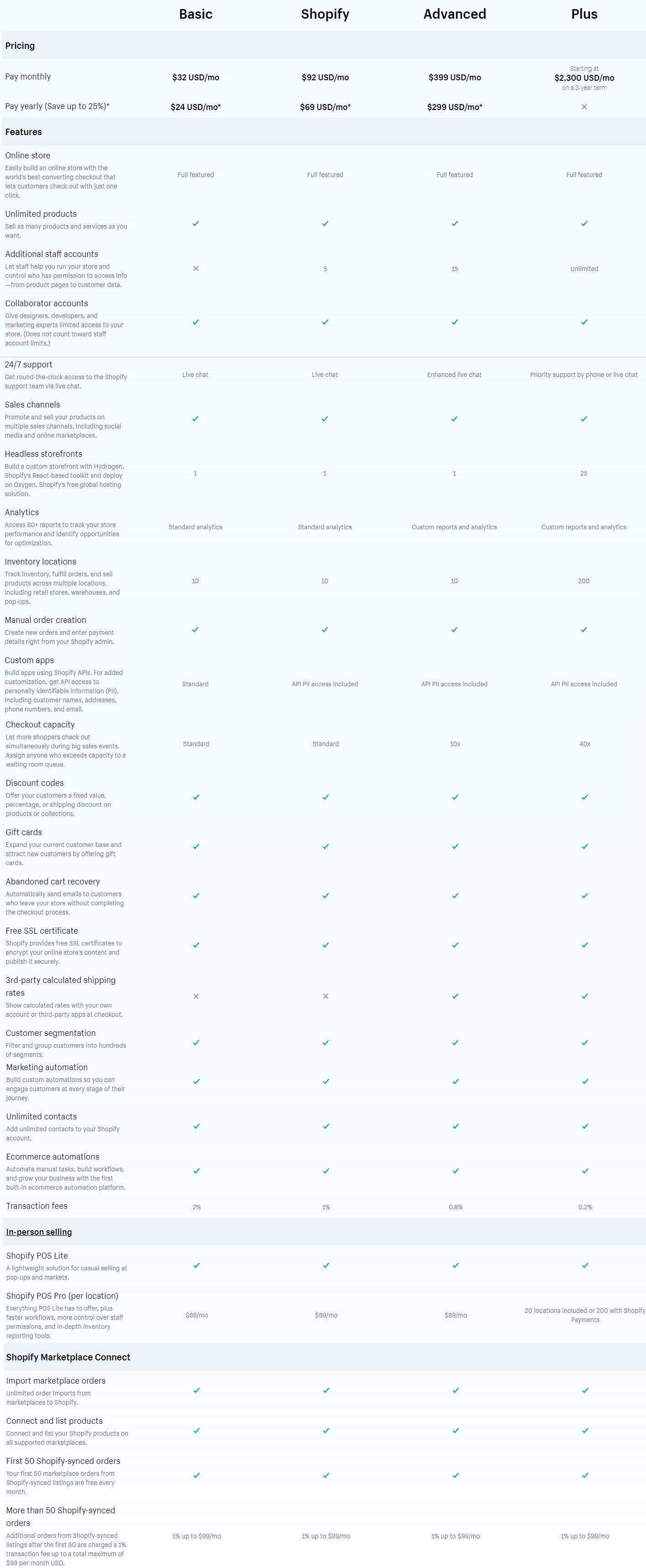
💡 Tip: Discover The Pros and Cons Of Shopify for Dropshipping In 2024.
Now, let’s review each of the Shopify pricing plans in detail. 👇
Basic Shopify
The Basic Shopify plan is a more comprehensive option, priced at $32/month. It includes features such as creating an online store, customizing your website, and adding a shopping cart.
The plan also allows you to expand your sales to social media platforms like Instagram and Pinterest, as well as marketplaces like Amazon, eBay, and Google Shopping.
👉 Check out Dropshipping Email Marketing: 16 Best Email Marketing Tools For Shopify.
Moreover, it includes features to recover abandoned carts and fraud analysis. The plan also allows for 1 staff account and the ability to accept credit card payments through Shopify’s own payment gateway or through a third-party gateway. What’s more, it also includes 1 public hydrogen storefront.
It also includes 24/7 live chat support and 2% transaction fees with third-party payment providers.
We recommend this Shopify pricing plan for small to medium-sized businesses looking for more advanced features than the Shopify Lite plan.
Shopify Regular
The Shopify Regular pricing plan is priced at $92/month.
This Shopify pricing plan includes all the features of the Basic Shopify plan. Also, it offers additional features that are more suitable for businesses with a higher volume of sales. Thus, these features include the ability to create up to five staff accounts, advanced report building, and real-time carrier shipping.
What’s more, the plan also includes a feature called “gift cards” which allows customers to purchase gift cards for your store.
Plus, it includes access to the “Professional Reports” feature which provides in-depth insights into your sales, inventory, and customer data. Not only that, but the Shopify Regular plan also includes eCommerce automation.
With this, you can automate manual tasks, build workflows, and grow your dropshipping business. Plus, it is reducing transaction fees to 1%.
We recommend this Shopify pricing plan for businesses with a higher volume of sales and more advanced needs for inventory management and shipping.
👉 Read about The 12 Best Shopify Wholesale Apps for Your Dropshipping Business.
Advanced Shopify
The Advanced Shopify pricing plan is actually the most “advanced” plan offered by Shopify. It costs $399/per month.
This Shopify plan includes all the features of the Basic and Regular plans, as well as additional advanced features. Therefore, this plan is suitable for businesses with high sales volume and complex needs.
Some of the extra features include the ability to create up to 15 staff accounts, advanced report building, and real-time carrier shipping, duties, and import taxes. Plus, this account has even lower transaction fees of 0.6%.
In fact, this plan also provides access to the “Advanced Shopify” feature. This one actually allows you to calculate and report on shipping rates, taxes, and discounts.
I recommend this Shopify pricing plan for businesses with a large volume of sales. Also, the ones with more complex needs for inventory management, shipping, reporting, and calculating shipping rates, taxes, and discounts.
Shopify Plus
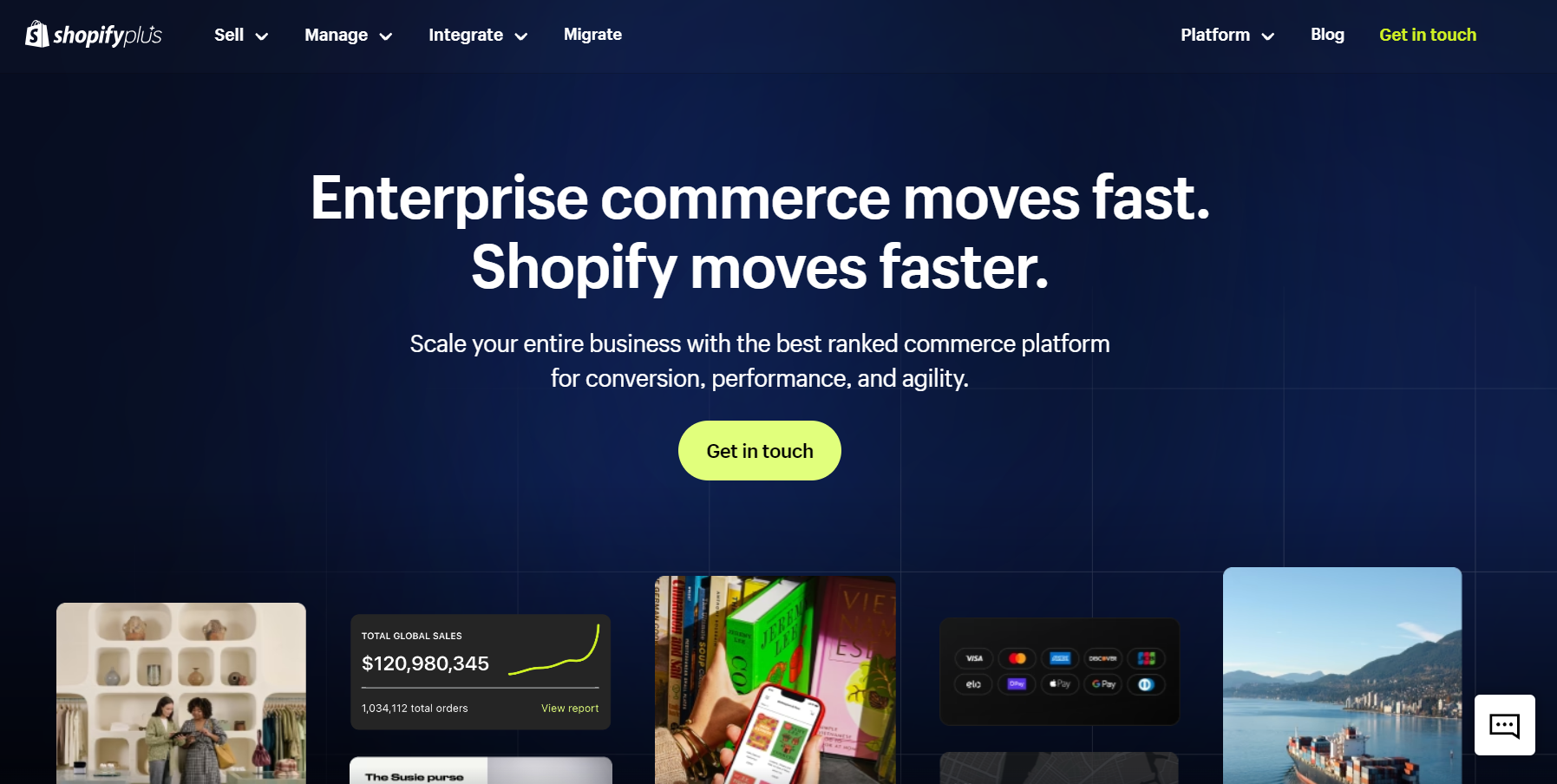
Shopify Plus is an enterprise-level ecommerce platform that starts at $2,300 per month.
This Shopify pricing plan includes all of the features of the standard Shopify plan. Also, it includes additional features designed for high-volume merchants. Some of them are
- unlimited staff accounts
- priority support
- advanced reporting and analytics
- custom checkout apps,
- the ability to handle a large number of orders and customers
- 200 inventory locations
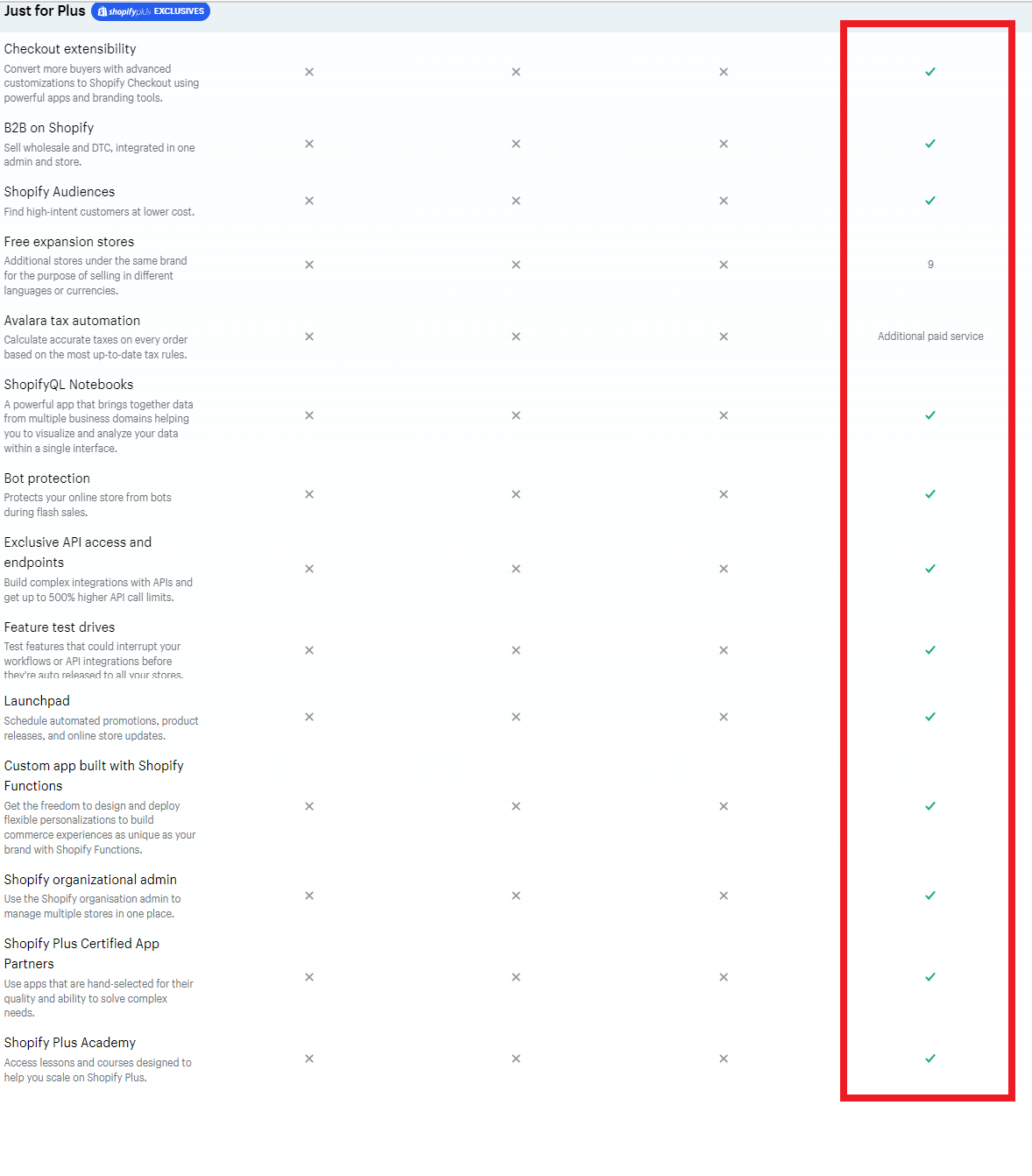
However, keep in mind that Shopify Plus pricing is based on the merchant’s monthly sales volume. So, the price can vary depending on the merchant’s specific needs.
Also, there are minimal transaction fees of 0.2%.
Shopify Starter
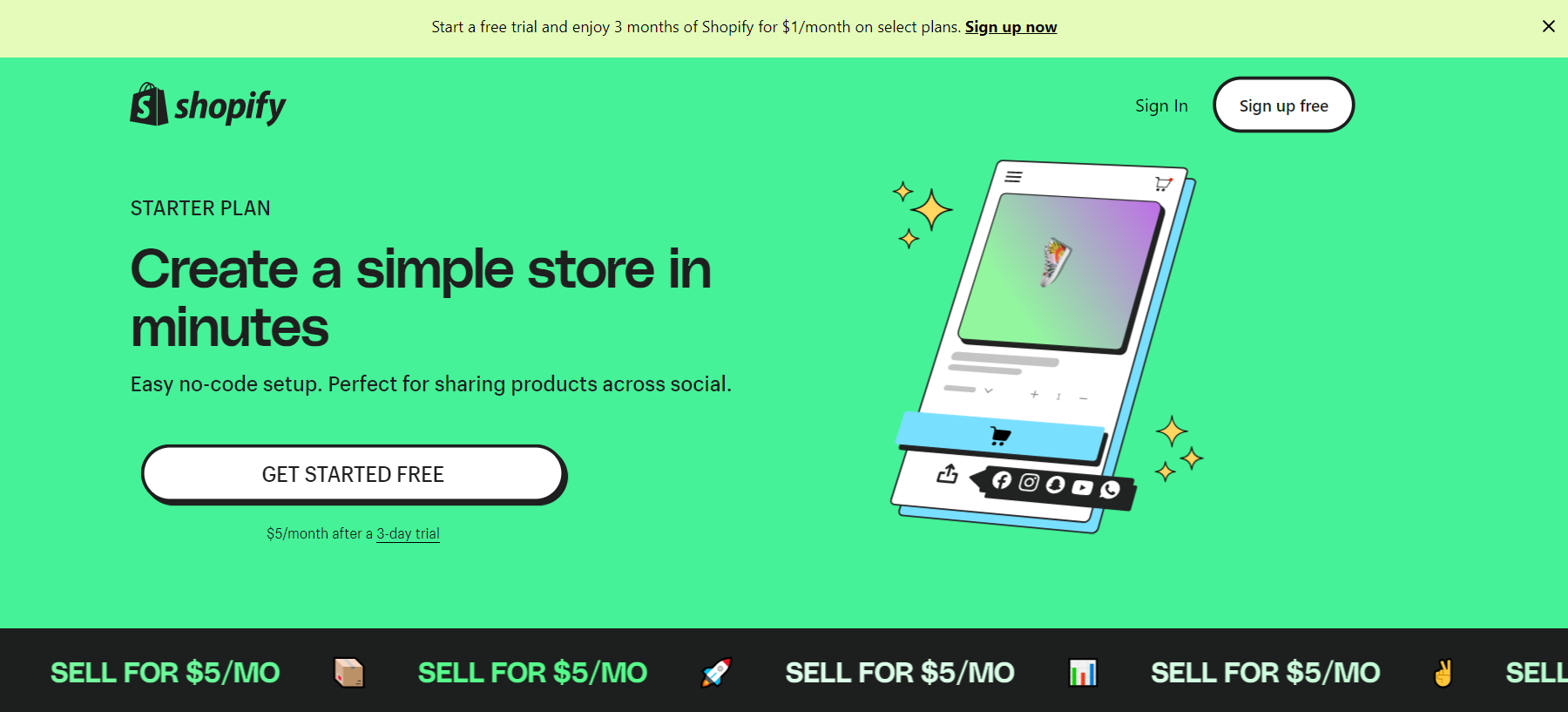
The Shopify Starter plan is actually a replacement for the Shopify Lite plan. However, it is a cheaper option priced at $1/month.
In fact, with this Shopify promotion, you can start Shopify for free for 3 months instead of only 14 days, for any of the Shopify pricing plans. After that, Shopify will charge you for the starter plan you choose.
Also, the starter plan is perfect for sharing a link from your product on social media, via email, SMS, WhatsApp, and other channels. Also, you have access to crucial features like product pages, checkout, Inbox, and Linkpop.
However, after you’ve built up a customer base and found your place in the dropshipping market, we recommend you look at the Shopify Basic plan, which offers value-added services.
💡Tip: Check out the 18 Best Shopify Dropshipping Apps [Review & Expert Guide].
How To Choose The Right Shopify Pricing Plan For Your Dropshipping Business
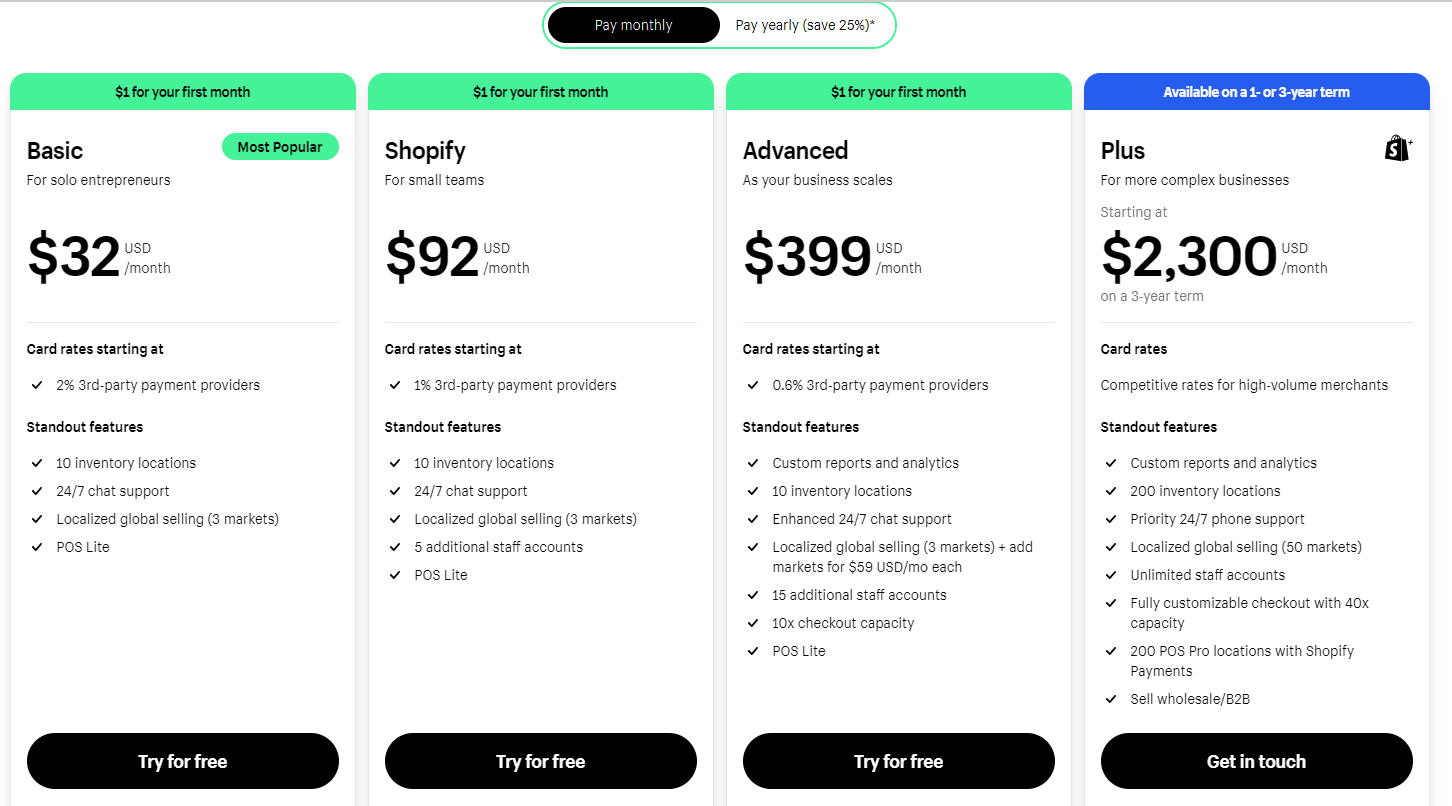
First, keep in mind that the right choice depends only on your dropshipping business needs. However, here are some factors that will help you to review your needs.👇
🔸 The Features
Firstly, look at the features that each of the Shopify pricing plans includes. Then, consider the plan that provides all you require to run your dropshipping Shopify store.
👉 Check out the 13 Most Successful Shopify Dropshipping Store Examples.
Also, think about the features you first overlooked, because that might be very helpful to you in the future. Even though you previously managed without them, as your dropshipping store grows, they could be a worthwhile investment.
However, don’t always seek pricing plans with all the features either. Larger doesn’t necessarily equal better! If you don’t know how to handle it, why spend more?
Actually, feature-rich plans may frequently lead to bloat and an unpleasant experience if you are unprepared.
As a result, think about the features that are crucial to your dropshipping business’s success, and the ones you know how to deal with, and pick a plan that contains them.
Also, always ask yourself where you want to be in the future. What sales channels will you use? Or do you plan to expand you a different location? These questions will help you choose the right pricing plan.
🔸 The Average Order Value
Next, consider your AOV. If you expect to have a high sales volume, you may want to consider the Shopify or Advanced Shopify plan, which includes more advanced features such as gift cards and professional reports.
In fact, with a higher Shopify plan, stores with more monthly orders and a higher AOV will pay less overall.
Meanwhile, dropshipping stores with fewer orders and smaller cart sizes would benefit more from choosing one of the free Shopify options.
🔸 The Number of Products
The number of products you plan to sell will affect which plan is right for you. So, this factor might affect the pricing plan you choose. For example, a less expensive Shopify plan might do well if you have fewer products.
In fact, the Basic Shopify plan allows for a maximum of 500 products, while the Advanced Shopify plan allows for an unlimited number of products.
Basically, this one is based on the actual number of products you have in your dropshipping Shopify store. So, there’s not much to think about here, just count!
💡 Tip: Learn How to Remove ‘Powered by Shopify’ – Short Guide.
🔸 Payment and Shipping Options
Accordingly, all pricing plans allow you to connect to over 100 external payment gateways such as PayPal, Amazon Pay, and Apple Pay.
However, only the Shopify and Advanced Shopify plans include advanced shipping options such as carrier-calculated shipping rates and real-time shipping rates. This means that you can set up shipping rates based on weight, destination, and carrier, and the rates will be automatically calculated at checkout.
🔸 Your Budget
Lastly, you might dream big, but it is all about the budget you have, and what you can afford. Therefore, consider your budget and choose a plan that fits within it while still providing the features and capabilities you need to run your business.
👉 Read about How To Pause Or Cancel Shopify Subscription? [2024].
How To Reduce Transaction Fees On Shopify
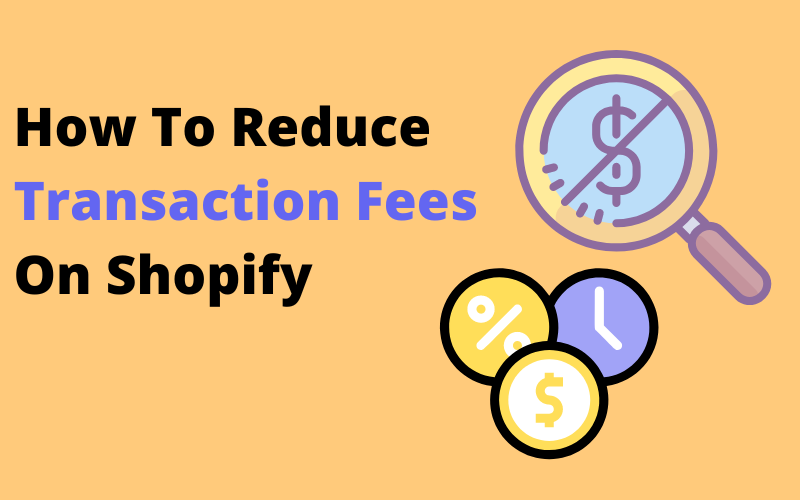
When a customer makes a purchase on your dropshipping store on Shopify, the platform charges a fee for processing the payment.
Thus, the amount of this fee can vary depending on which payment gateway you use. Commonly, it includes a percentage of the total purchase amount and a fixed cost per transaction.
👉 Learn about Shopify Conversion Rates: A Beginner’s Guide (2024).
🔹 Basic Shopify plan
Basic Shopify has a transaction fee of 2.9% + 30¢ per transaction. Furthermore, there is an extra 2% cost for each transaction if you use a different payment gateway than Shopify Payments.
🔹 Regular Shopify Plan
The Shopify Regular plan has a transaction fee of 2.4% + 30¢ per transaction. But, there is an extra 1% transaction fee if you use a payment gateway other than Shopify Payments.
🔹 Advanced Shopify
Advanced Shopify has a transaction fee of 2.4% + 30¢ per transaction. Also, the per-transaction cost is 0.6% while using a provider other than Shopify Payments.
🔹 Shopify Plus
On the other hand, Shopify Plus has a lower transaction fee of 0.25%. This can be a significant savings for dropshipping businesses with high sales volume.
As you can see, the Shopify plan has lower transaction costs than the platform’s free plan. The expenses decrease even more as you move up the plan tiers.
Additionally, some payment gateways may have additional fees, such as monthly or annual charges.
But, are you interested in reducing your transaction fees? Here are a few tips to do it! 👇
- Select different pricing plans. Shopify offers different pricing plans, with varying transaction fees. So, one approach is to select a pricing plan that offers reduced transaction fees.
- Use Shopify Payments. Shopify has its own payment gateway called Shopify Payments, which has lower transaction fees than third-party gateways.
- Use a third-party payment gateway. If you are unable to use Shopify Payments, consider using a third-party payment gateway, like PayPal or Stripe that charges lower transaction fees.
- Negotiate with your payment provider. Contact your payment provider and ask if they can offer you lower transaction fees.
- Reduce the number of transactions. By reducing the number of transactions, you can lower your overall transaction fees. Also, encourage customers to purchase more items in a single transaction.
- Optimize your pricing strategy. Optimize your pricing strategy to increase your profit margins and offset transaction fees.
💡 EXTRA Tip: We recommend you to check out the 7 Best Payment Gateways For Shopify, and see which one fits you most.
👉 Learn How To Add Afterpay To Shopify: My 4-Step Guide + Examples.
Shopify’s free trial and money-back guarantee
Shopify provides a 3-day free trial for all its pricing plans. Then, you can use it 1 month for $1 This enables you the opportunity to test out the platform and its features before committing to a paid plan.
Also, during this trial period, you have access to all features of the selected plan. So, you can set up your dropshipping store, add products, and process orders.
After the trial ends, you must choose a pricing plan and provide payment information to continue using Shopify. However, if you cancel your Shopify account before the trial ends, you will not be charged.
Additionally, Shopify offers a 30-day money-back guarantee for all paid plans, allowing you to request a full refund within the first 30 days of your subscription if you are not satisfied with the platform.
Please NOTE that refund requests must be made within the first 30 days of your subscription and that refunds will only be issued to the original payment method used to purchase the plan.
💡 However, our advice here is that Shopify offers a variety of pricing plans and all of them have a 3-day free trial. So, take the time to explore the different options and see which one is best for your business. 😉
💡 Also, in order to take full advantage of the trial and money-back guarantee, you should have a domain name and an accepted payment gateway before starting the trial.
Shopify’s pricing compared to other e-commerce platforms
We all know that Shopify is the no.1 eCommerce platform, but let’s make a little comparison about its cost-effectiveness.👇
Shopify vs Bigcommerce
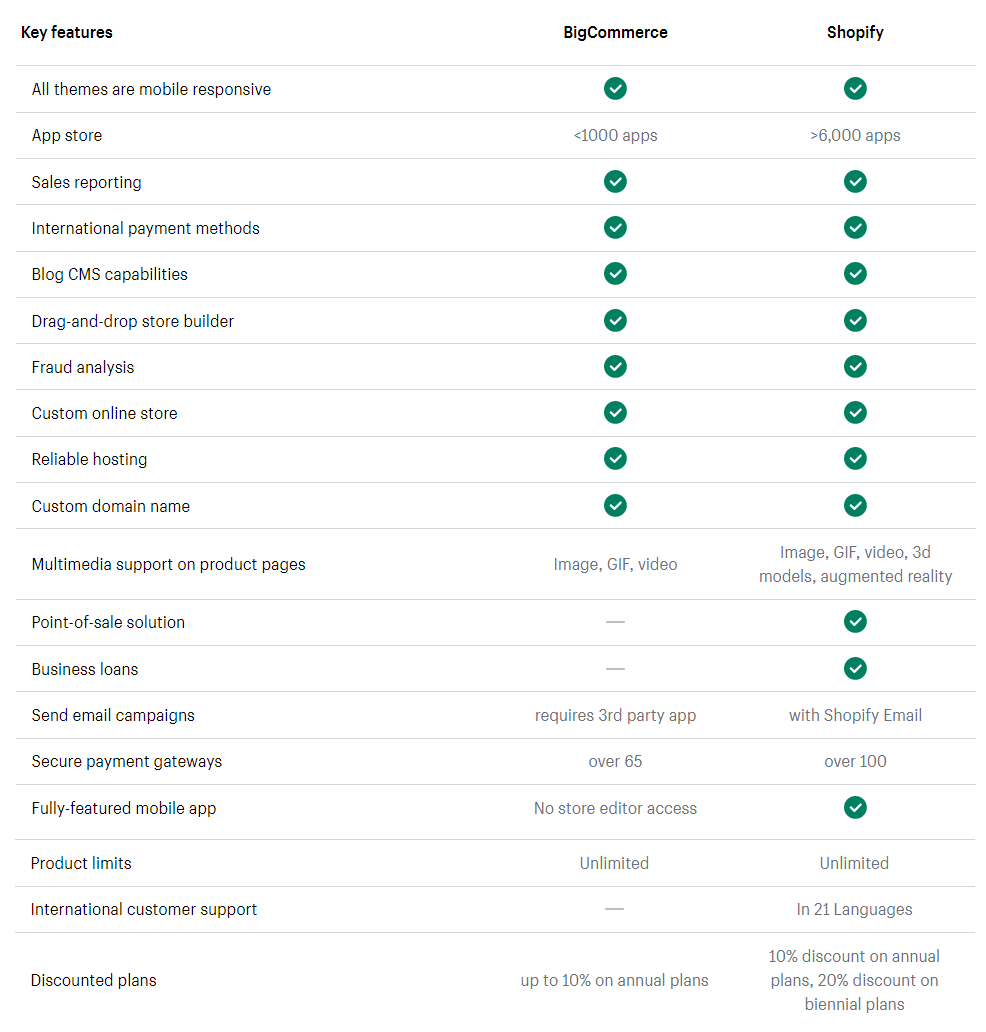
Shopify and Bigcommerce are both popular e-commerce platforms that offer a wide range of features for creating and managing an online store.
💡 Read: Shopify vs. Custom Store for Dropshipping – What’s Better & Why?
➡ Pricing
Shopify and Bigcommerce are both online store builders, but they have different ways of charging for their services. Shopify has set prices for different levels of service. The cheapest plan is $32 a month, and the most expensive is $399 a month.
On the other hand, Bigcommerce has more flexible pricing options, with plans starting at $29.95 a month and going up to $299.95 a month. Also, Bigcommerce gives you 15 days to try it for free, while Shopify gives you 14 days.
➡ Features
Shopify and Bigcommerce both help you create a dropshipping store, but they have different ways of designing it.
First, Shopify gives you many pre-made templates to choose from and a website builder that’s easy to use.
On the other hand, Bigcommerce also has templates, but it doesn’t have as many options for changing the design. Bigcommerce does have a tool that lets you change the look of your store without needing to know how to code.
Both platforms can help you manage your products, take payments, and keep track of your inventory. However, they have some differences that might make one a better choice for your business.
➡ Integration
When it comes to integrating with other tools to your dropshipping store, Shopify has more options than Bigcommerce.
Shopify has more apps and ways to connect to other services, especially when it comes to taking payments. Bigcommerce also has a good amount of apps and integrations, but not as many as Shopify.
➡ Scalability
In terms of scalability, Shopify is a more suitable option for small and medium-sized businesses, while Bigcommerce is ideal for larger businesses that need more advanced features and scalability.
What’s more, Shopify is known for its ease of use and simple setup process, whereas Bigcommerce is more suited for businesses with more complex needs.
However, in our opinion, Shopify is a great choice for dropshipping businesses that want a simple, easy-to-use platform with a wide range of pre-designed templates and apps, while Bigcommerce is a great choice for those that need more advanced features and scalability.
Shopify vs Squarespace
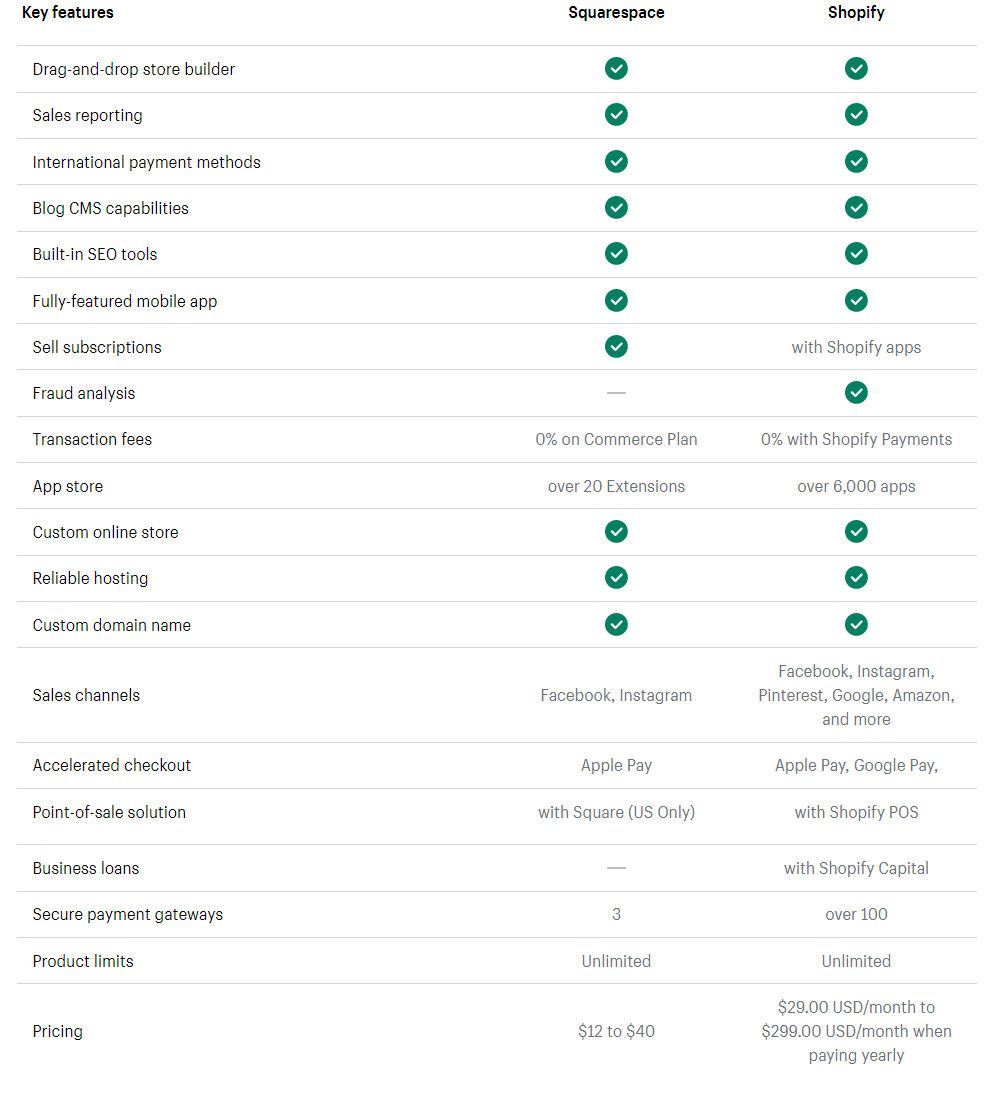
➡ Pricing
As we already mentioned, Shopify offers a tiered pricing structure, with plans starting at $32 per month and going up to $399 per month for the advanced plan.
Squarespace, on the other hand, offers a flat pricing structure, with plans starting at $18 per month and going up to $40 per month for the advanced plan.
However, Shopify’s pricing plans include a transaction fee, while Squarespace’s pricing plans do not.
➡ Features
Shopify has a lot of tools to help you run your dropshipping store, like a website builder that’s easy to use and ways to manage your products, keep track of your inventory, and take payments.
Squarespace is more about making your store look good with different templates to choose from and a tool to customize the design. While Squarespace also lets you sell things, it doesn’t have as many tools as Shopify does.
➡ Integrations
Shopify has a lot of apps and tools that you can add to your store, including many ways to accept payments. Squarespace also has some apps and tools, but not as many as Shopify.
➡ Scalability
Both Shopify and Squarespace can handle a lot of sales, but Shopify is more for larger dropshipping companies that sell a lot. Shopify has a lot of tools and features that help businesses grow, while Squarespace is more for small businesses and people who want to sell a few things.
Shopify vs. Etsy
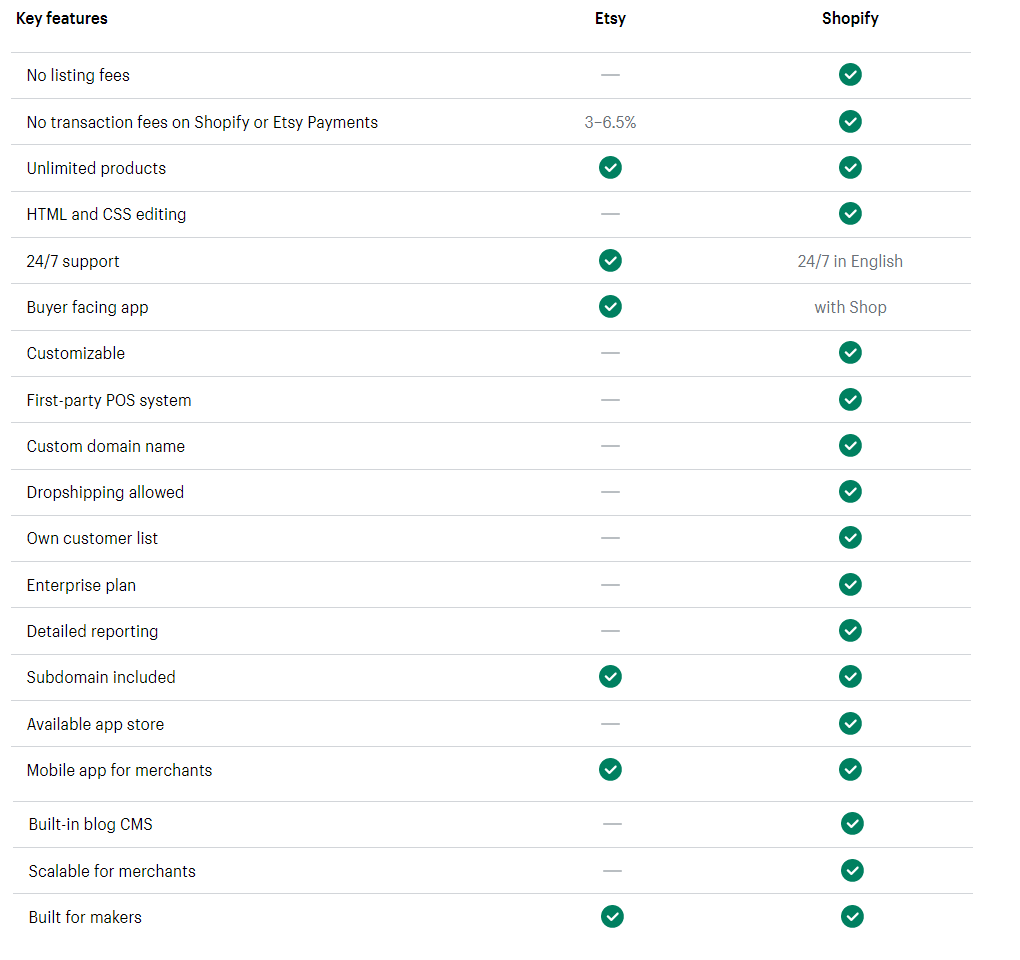
➡ Pricing
Shopify offers a tiered pricing structure with plans starting at $32 per month, going up to $399 per month for the advanced plan.
Etsy charges a $0.20 listing fee for each item listed and a transaction fee of 5% of the sale price.
Additionally, Shopify offers a 3-day free trial and usage for 1 month for only $1 while Etsy does not offer a free trial.
➡ Features
Shopify offers more options for building and managing your online store. Like a website builder, it offers various ways to manage products and inventory. Also, it has integration with different payment methods.
On the other hand, Etsy is more of a marketplace platform where businesses can sell their products and connect with customers. It’s more focused on listing and selling products rather than creating a standalone website.
➡ Integrations
Shopify has a larger selection of apps and integrations that you can add to your store, including more options for accepting payments. This can be helpful if you’re looking to add specific features to your store.
On the other hand, Etsy has fewer integrations and apps, and the majority of them are specific to Etsy’s platform.
➡ Scalability
Both Shopify and Etsy can handle a large number of sales and customers.
But, Shopify is more suited for larger dropshipping businesses with a lot of sales. It provides many tools and features to help a business grow.
On the other hand, Etsy is better for small businesses or individuals. It is mainly a marketplace for people to sell their products and connect with customers.
👉 Read about Etsy Dropshipping – The Ultimate Guide for Beginners.
How Shopify Pricing Plans Vary For Small and Large Businesses
Shopify is great for dropshipping newbies. But, if you are a successful dropshipper who wants to drive more traffic and sales, or handle the order fulfillment process easily, Shopify is there for you as well! So, here’s our opinion on this! 👇
➡ First, take advantage of one of their free trial apps and build your dropshipping store. There are various Free store templates that you can choose from. Or, instead of this, you can use the Shopify Starter plan for only $1/month, and get 3 months free.
👉 Check out What Is the Minimum Budget to Start Dropshipping with Shopify?
Furthermore, the next important thing to make sales is actually driving traffic. So, this Shopify pricing plan allows you to share a link from your product on social media, via email, SMS, WhatsApp, and other channels. Additionally, you get access to important features like Linkpop, the payment process, and product pages.
However, you should be aware that you aren’t getting a full website builder and that features like support for custom domains, abandoned cart recovery, discount coupons, gift cards, and a complete checkout module aren’t included.
And, that’s not all! Not only you will start paying $1/month, but the transaction fee for each transaction is also 5%.
And these are the warning signs that it’s time to upgrade to a more sophisticated Shopify pricing plan. In addition, the credit card rate for Shopify’s Basic plan is 2.9% plus $0.30 at launch.
➡ So, when you are still a small dropshipping business with a low budget, the Shopify Basic plan is a very cost-effective option. The Basic plan includes features such as an online store, a secure shopping cart, unlimited products, 24/7 support, and mobile commerce. Also, it is great for reporting or shipping options, and a wide range of available add-ons.
➡ However, when you feel like you have outgrown the reporting and shipping options, that’s when you should change to Shopify Regular.
➡ Finally, you should consider switching to the Shopify Advanced plan when you have a large and complex store, require advanced reporting and shipping options, and want access to 24/7 support by phone, email, and live chat.
In general, you should consider upgrading to a more advanced plan as their store grows and you require additional features and support. The choice of which plan to use will depend on the specific needs of your dropshipping business and budget.
Frequently Asked Questions about Shopify Pricing Plans
How much does Shopify cost and what are the transaction fees?
Shopify starts at $1/month with its Shopify Starter plan. However, the pricing plans which include more features start at $32/month, $92/month, and $399/month.
Additionally, there are transaction fees associated with using Shopify’s payment gateway. They range from 2.9% + 30 cents per transaction for the Basic Shopify plan to 2.4% + 30 cents per transaction for the Advanced Shopify plan.
Is there a free trial or money-back guarantee for Shopify?
Shopify offers a 3-days free trial and a 30-day money-back guarantee.
How do I choose the right Shopify pricing plan for my business?
When choosing a Shopify pricing plan, consider the features and functionalities that your business needs. What’s more, keep in mind your AOV, the number of products you sell, and the shipping options that the plan includes.
Also, compare the different plans and their pricing to find the one that best fits your budget and offers the necessary tools for your business to succeed.
How many staff accounts are included in each Shopify pricing plan?
Shopify Basic offers only 1 staff account, Shopify Regular includes 5 staff accounts, Shopify Advanced has 15 staff accounts, and Shopify Plus staff accounts number is unlimited.
Are there any discounts or promotions available for Shopify pricing plans?
Yes, Shopify offers discounts and promotions for their pricing plans. However, the discounts vary depending on the time of year.
Also, they can include a discount for a longer-term commitment, a % off the monthly or annual plan, etc.
Are there any checkout customization options available on Shopify?
Yes, Shopify offers various customization options for the checkout process.
These options include the ability to customize the checkout page layout and design, add custom fields to the checkout form, including custom scripts or code to the checkout page, third-party checkout process, etc.
How does Shopify handle shipping and tax calculations?
Shopify calculates shipping rates based on the weight of the products in the customer’s cart, the shipping destination, and the shipping options set up in the Shopify admin.
On the other hand, tax calculations are based on the customer’s shipping address and the tax rates set up in the Shopify admin.
Are there any limitations on the number of products I can sell on Shopify?
Shopify does not place any limits on the number of products you can add to your store, allowing you to sell as many items as you wish.
However, once you reach 50,000 products in your store, there may be some limitations on the rate at which you can upload new items.


Conclusion
In summary, Shopify offers a range of pricing plans to suit the needs of businesses of different sizes and sales volumes.
The Basic Shopify plan is suitable for small businesses just starting out, while the Shopify and Advanced Shopify plans are better suited for growing businesses.
The Shopify Plus plan is designed for large businesses with high sales volume and custom needs.
Also, read Shopify vs. Custom Store for Dropshipping – What’s Better & Why?
However, it is also important to consider the transaction fees and any add-ons you may need when evaluating the different plans. Once you have all the information needed, you can make a better decision for your dropshipping business.













![The Top 21 3PL Companies Compared [2024 List & Guide]](https://images.weserv.nl/?url=https://prod-dropshipping-s3.s3.fr-par.scw.cloud/2024/03/Frame-3922469.jpg&w=420&q=90&output=webp)